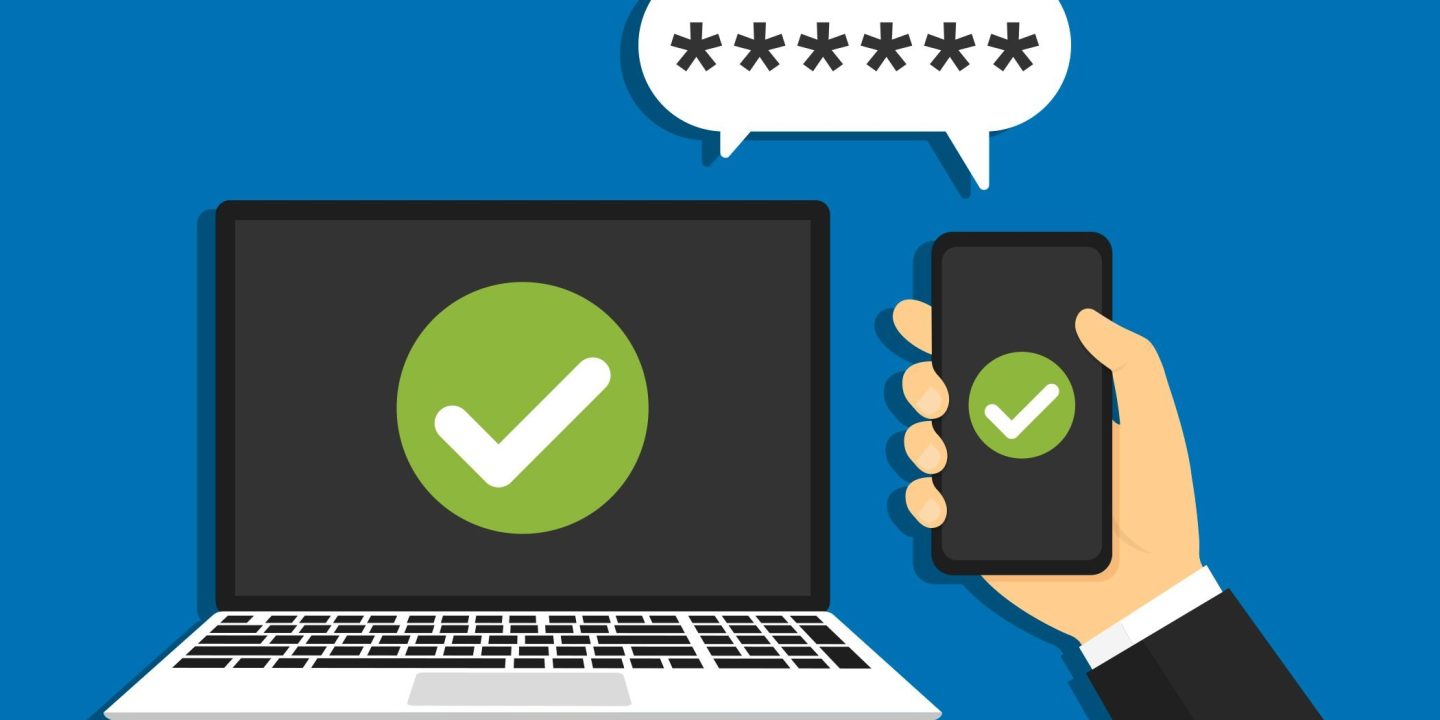
In today’s interconnected world, where the internet plays an integral role in our daily lives, safeguarding our digital assets has become paramount. As cyber threats continue to evolve and grow in sophistication, it is crucial to implement robust security measures to protect sensitive information. One such measure that has gained prominence is two-factor authentication (2FA), a powerful tool that adds an extra layer of security to our online accounts. In this comprehensive guide, we delve into the intricacies of two-factor authentication, exploring its benefits, implementation methods, and best practices.
The Significance of Two-Factor Authentication (2FA)
In an era where data breaches and identity theft have become commonplace, relying solely on passwords for account security is no longer sufficient. Hackers employ various techniques to gain unauthorized access to our accounts, such as phishing, social engineering, and brute-force attacks. Two-factor authentication offers a robust defense mechanism against these threats by adding an additional layer of verification, making it exponentially harder for malicious actors to compromise our accounts.
Understanding Two-Factor Authentication
Two-factor authentication, as the name implies, involves the use of two distinct authentication factors to verify the identity of the user. These factors typically fall into three categories: something you know, something you have, and something you are. By combining two of these factors, 2FA ensures a higher level of security compared to traditional single-factor authentication methods.
The Implementation Process
Types of Two-Factor Authentication
There are several methods available for implementing two-factor authentication, each with its own unique characteristics and suitability for different scenarios. Let’s explore some of the most commonly used 2FA techniques:
- SMS-based Verification: In this method, a unique verification code is sent to the user’s registered mobile number. The user must enter this code along with their password to gain access to the account. While SMS-based verification provides an additional layer of security, it can be susceptible to SIM swapping attacks and interception of text messages.
- Authentication Apps: Popular authentication apps like Google Authenticator, Authy, and Microsoft Authenticator generate time-based one-time passwords (TOTPs) that are synced with the user’s account. These passwords refresh at regular intervals, providing an added layer of security against potential threats.
- Biometric Authentication: Leveraging unique biological characteristics such as fingerprints, facial recognition, or iris scans, biometric authentication offers a seamless and highly secure method of identity verification. Biometric data is difficult to replicate, significantly reducing the risk of unauthorized access.
- Hardware Tokens: Hardware tokens, also known as security keys or USB tokens, are physical devices that generate unique codes or use cryptographic methods to authenticate the user. These tokens are highly secure and offer protection against phishing and other online attacks.
Best Practices for Implementing Two-Factor Authentication
While implementing two-factor authentication is a crucial step towards enhancing account security, certain best practices should be followed to maximize its effectiveness:
- Educate Users: Provide clear instructions on setting up and using two-factor authentication. Educate users about the importance of strong, unique passwords and the need to enable 2FA for all their online accounts.
- Use Multiple Authentication Factors: Whenever possible, encourage users to utilize two or more distinct authentication factors for enhanced security. Combining something they know (e.g., password) with something they have (e.g., authentication app) significantly strengthens the authentication process.
- Regularly Update Security Measures: Stay up to date with the latest advancements in two-factor authentication technologies and periodically review and update the security measures in place.
- Offer Backup Options: In the event a user loses access to their primary authentication factor, provide alternative backup methods for account recovery, such as backup codes or secondary contact information.
- Consider Contextual Authentication: Implement contextual authentication, which analyzes additional factors like location, device, and user behavior, to detect and prevent suspicious login attempts.
Frequently Asked Questions (FAQs)
Q1: Can two-factor authentication be bypassed?
A1: While no security measure is entirely foolproof, two-factor authentication significantly reduces the risk of unauthorized access. However, it is crucial to follow best practices and ensure the chosen 2FA method is implemented correctly.
Q2: Is two-factor authentication only applicable to online accounts?
A2: No, two-factor authentication can also be used to secure physical access to premises or sensitive areas. Biometric authentication, for instance, can be employed to grant entry to restricted areas.
Q3: Are there any downsides to using two-factor authentication?
A3: While the benefits of two-factor authentication outweigh the drawbacks, it can sometimes cause inconvenience if the user does not have access to their secondary authentication factor, such as when they misplace their hardware token or lose their mobile device.
Q4: Can two-factor authentication be used with all online services?
A4: Many online services, including email providers, social media platforms, and banking institutions, offer two-factor authentication as an optional security feature. It is recommended to enable 2FA for all accounts that support it.
Q5: Is two-factor authentication a one-size-fits-all solution?
A5: While two-factor authentication significantly enhances security, its suitability depends on the specific requirements of the system or service. It is essential to assess the risks and choose the appropriate authentication method accordingly.
Top Selling Category: Two-Factor Authentication Solutions
When it comes to implementing robust two-factor authentication solutions, several top-selling categories exist in the market. These categories offer a wide range of products and services tailored to meet diverse security needs:
- Authentication Apps: Google Authenticator, Authy, and Microsoft Authenticator are among the leading authentication apps available, offering seamless integration with various online services.
- Security Keys: Well-known brands like Yubico and Thales provide hardware tokens and security keys that offer unparalleled protection against unauthorized access.
- Biometric Authentication Devices: Companies such as Apple, Samsung, and Microsoft offer biometric authentication solutions embedded in their devices, such as fingerprint sensors and facial recognition technology.
- Enterprise-Grade Solutions: For businesses and organizations seeking comprehensive security solutions, vendors like RSA, Duo Security, and Okta offer enterprise-grade two-factor authentication platforms.
Top Selling Products: Two-Factor Authentication Devices
To further aid your journey towards implementing robust two-factor authentication, we have curated a list of top-selling products in the market:
- Yubico YubiKey 5 Series: Yubico’s YubiKey 5 Series offers a range of hardware tokens supporting various authentication protocols, ensuring compatibility with a wide range of systems and services.
- Google Titan Security Key: Designed to provide strong two-factor authentication for Google accounts, the Google Titan Security Key offers seamless integration and enhanced protection against phishing attacks.
- Apple iPhone with Face ID: Apple’s iPhone models equipped with Face ID provide a secure and convenient biometric authentication solution, leveraging advanced facial recognition technology.
- Microsoft Surface Pro with Windows Hello: Microsoft’s Surface Pro devices, combined with Windows Hello biometric authentication, offer a powerful and secure way to protect your accounts and sensitive data.
Top Selling Brands: Two-Factor Authentication Solutions
In the realm of two-factor authentication solutions, several reputable brands have earned recognition for their commitment to security and innovation:
- Yubico: Yubico is renowned for its extensive range of hardware tokens and security keys, providing industry-leading two-factor authentication solutions.
- Google: With its Google Authenticator app and Titan Security Key, Google has established itself as a pioneer in the field of two-factor authentication.
- RSA Security: RSA Security offers enterprise-grade two-factor authentication solutions, empowering businesses to safeguard their digital assets effectively.
- Duo Security: Duo Security specializes in providing comprehensive two-factor authentication platforms tailored to the unique needs of organizations, offering seamless integration and enhanced security features.
Conclusion
As the digital landscape continues to evolve, protecting our online presence has never been more critical. Two-factor authentication emerges as a powerful ally in the battle against cyber threats, bolstering account security and mitigating the risks associated with unauthorized access. By implementing two-factor authentication methods suited to our specific needs and following best practices, we can navigate the digital world with confidence, knowing that our sensitive information remains safeguarded from potential malicious actors. Stay proactive, embrace two-factor authentication, and fortify your digital defenses in this ever-evolving technological era.





